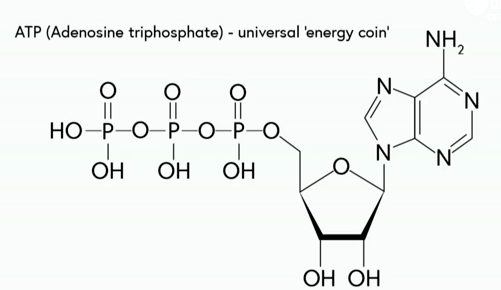Our body uses energy for all of its functions and food is the main source of energy. Food contains nutrients that when broken down in the gastrointestinal tract release energy that can be used by the body’s cells, tissues and organs for normal function, growth and repair.
In this post I will explain some basic scientific concepts regarding food energy and explores the concept of energy balance (i.e. the equilibrium between energy intake and expenditure). I will show you how you can calculate your own ‘personalised’ energy intake requirements, and assess whether your current body weight is optimal for health.
Our body uses energy for all of its functions. Even when you’re asleep, you expend a considerable amount of energy, as for example, your heart is still beating to support circulation, your lungs are still breathing, your kidneys are still working to produce urine, and there’s still activity in the brain. Where does all that energy come from? The answer is food. We eat food in order to survive and carry out our everyday functions. Food contains nutrients that, when broken down, can release energy in the form of adenosine triphosphate or short for ATP, the universal energy coin used by our body cells and tissues for functional growth and repair.

The surplus of energy that does not get metabolised is stored, mainly in adipocytes or fat stores, to be used later on when there’s an energy debt. The nutrients that can provide the body with energy are protein, fat, alcohol, and carbohydrate. They are collectively known as macronutrients. Foods that are rich in protein include things like eggs, meat, fish, chicken, beans, and pulses. Foods that are rich in fat include fats and oils, full fat dairy, and the number of processed foods that use fat in the cooking preparation stages like confectionery. Carbohydrate rich foods are bread, cereal, pasta, rice, potatoes, and some fruit and veg.
Alcohol, when consumed, can also provide energy but has no other nutritional value, which is why, in lay terms, alcohol is often referred to as empty calories. Food also contains very important micronutrients, also known as vitamins, minerals, and trace elements. But these do not have any calorific content. They are however, extremely important for health. We will explore the role of both macro and micronutrients for health in the future blog posts, so follow the blog and subscribe to the newsletter to don’t miss them. Out of the four macronutrients, fat is the most energy dense. One gramme of fat, when digested by the body, produces nine kilocalories, followed by alcohol. One gramme of alcohol provides seven kilocalories. And then protein and carbohydrate, which will provide roughly four kilocalories per gramme.

Those numbers indicate that foods high in fat contain considerably more calories than foods that are low in fat. So for example, you will need to consume 20 stalks of celery but only one tablespoon of mayonnaise to have an energy intake of 100 calories. So how much energy should we be consuming in a day? Energy requirements do vary from person to person and will depend on your age, gender, body size and composition, and physical activity levels. One size does not fit all. We have equations that gave an estimate of basal energy requirements and adjust for your physical activity level. If you want to calculate your own personal energy requirements, then try out the activity after you read this post.
Please remember that this will be an approximation. In the control environment of a lab, we can be more precise and can directly measure your resting metabolic rate using ventilated hood technology, which monitors oxygen consumption and CO2 production. However, one thing is for sure. For adults who do not need to lose weight and want to maintain their current body mass, energy intake, i.e., how much we eat, needs to be in balance with energy expenditure, i.e., how much energy we use up doing activities. If that balance tips either side, then we can either lose weight or gain weight.
This of post is a simplified model as other parameters, such as, for example, genetics and hormonal imbalances, which will be discussed in future posts, can influence this equilibrium between energy intake and energy expenditure. One might of course, ask how do I know if I should be in energy balance? In other words, how can we assess if someone’s body weight is optimal for their height? Are there any guidelines to tell us how much we should weigh for optimal health? The answer is yes. If you know your own weight and height, then you could calculate your own body mass index, also known as the BMI, and compare it to well established population standards.
Based on the World Health Organisation, people should aim to have a BMI between 18.5 and 25 kilograms per metre squared. If you’re not familiar with what the BMI is and how it can be calculated, don’t worry, there are a lot of online calculators. There is strong, well-established scientific evidence that links overweight and obesity levels to a range of diseases that are prominent in the Western world. Diseases like high blood pressure, diabetes mellitus, cardiovascular disease, some cancers, joint problems, depression, and overall mortality rates. Conversely, being underweight also carries health risks.
The BMI is by no means a perfect index and has received a lot of criticism from the scientific community as it is rough index of heaviness and cannot discriminate between fat mass and muscle mass, nor is it gender specific. But to be honest, for the majority of us, those of us who are not elite athletes, it is a pretty good indicator of excess weight and damaging levels of body fatness. Obesity levels have exponentially increased over the past 20 to 30 years in the Western world.

In the latest health survey for England carried out in 2010 to 2012, it revealed that 67% of men and 58% of women were overweight or obese. Currently, one in four adults are obese.
But by 2050, it is predicted that in the UK alone, obesity will affect 60% of adult men, 50% of adult women, and 25% of our children. This is why you might have heard it referred to as an epidemic. During the next few weeks, we will explore in more depth how diet can play a role in preventing obesity and other related diseases so don’t forget to join the newsletter and follow this blog to be the first to get the information for a healthier you.
Originally published at allyfortisnetwork.wordpress.com


